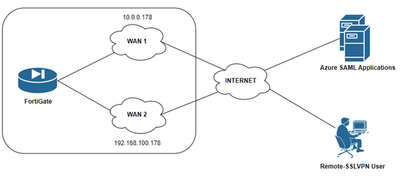- Support Forum
- Knowledge Base
- Customer Service
- Internal Article Nominations
- FortiGate
- FortiClient
- FortiADC
- FortiAIOps
- FortiAnalyzer
- FortiAP
- FortiAuthenticator
- FortiBridge
- FortiCache
- FortiCare Services
- FortiCarrier
- FortiCASB
- FortiConverter
- FortiCNP
- FortiDAST
- FortiData
- FortiDDoS
- FortiDB
- FortiDNS
- FortiDLP
- FortiDeceptor
- FortiDevice
- FortiDevSec
- FortiDirector
- FortiEdgeCloud
- FortiEDR
- FortiEndpoint
- FortiExtender
- FortiGate Cloud
- FortiGuard
- FortiGuest
- FortiHypervisor
- FortiInsight
- FortiIsolator
- FortiMail
- FortiManager
- FortiMonitor
- FortiNAC
- FortiNAC-F
- FortiNDR (on-premise)
- FortiNDRCloud
- FortiPAM
- FortiPhish
- FortiPortal
- FortiPresence
- FortiProxy
- FortiRecon
- FortiRecorder
- FortiSRA
- FortiSandbox
- FortiSASE
- FortiSASE Sovereign
- FortiScan
- FortiSIEM
- FortiSOAR
- FortiSwitch
- FortiTester
- FortiToken
- FortiVoice
- FortiWAN
- FortiWeb
- FortiAppSec Cloud
- Lacework
- Wireless Controller
- RMA Information and Announcements
- FortiCloud Products
- ZTNA
- 4D Documents
- Customer Service
- Community Groups
- Blogs
- Fortinet Community
- Knowledge Base
- FortiGate
- Technical Tip: Dual-WAN SSL VPN with Azure SAML SS...
- Subscribe to RSS Feed
- Mark as New
- Mark as Read
- Bookmark
- Subscribe
- Printer Friendly Page
- Report Inappropriate Content
| Description |
This article describes how to create an SSL VPN with Microsoft Azure SAML authentication with a dual WAN connection on the FortiGate.
|
| Scope |
SSL VPN with Azure SAML authentication using SSL VPN Realms for dual WAN link redundancy. Consider a scenario where the FortiGate has dual WAN connections and needs redundancy for SSL-VPN client authenticating using Azure SAML Single Sign-on.
To achieve this, SSL VPN realms must be configured along with creating multiple Azure SAML applications. It is possible though to create multiple firewall policies with specific firewall groups applied, where only one IdP is referenced at a time in each firewall policy.
However, in the case of SAML authentication for SSL VPN firewall policies where the source interface is the SSL VPN interface and the source user group references a SAML server, the first firewall policy in the list will be used to choose what IdP the SAML request will be sent to.
In this case, any SAML authentication request will be sent to the first IdP matched in the firewall policies configured, and subsequent policies and IdP's will not be triggered, hence the authentication request may fail.
To overcome this design limitation, it is possible to leverage SSL VPN realms. Only the firewall policies that have a group that matches the request for that realm will be evaluated. Therefore, the SAML request will be sent to the specific IdP configured for that SAML group. |
| Solution |
Enable SSL VPN Realms under Feature Visibility. Under System -> Feature Visibility -> Additional Features and enable the SSL VPN Realms.
Create an SSL VPN realm for each WAN interface. Go to VPN -> SSL-VPN Realms.
Create an Application for SAML on Azure. Create a new Application under Azure Portal. After logging into the Azure Portal, search for 'Enterprise Applications'.
Search for 'FortiGate', select 'FortiGate SSL VPN', and give it a name.
Assign Users and Groups.
Add Users and Groups under 'Add user/group'.
Create Single Sign-on SAML and define the Basic SAML Configuration parameters:
Identifier (Entity ID): https://<FortiGate IP address or FQDN of WAN1>:<Custom SSL VPN port>/remote/saml/metadata Reply URL (Assertion consumer Service URL): https://<FortiGate IP address or FQDN of WAN1>:<Custom SSL VPN port>/remote/saml/login Sign on URL: https://<FortiGate IP address or FQDN of WAN1>:<Custom SSL VPN port>/remote/saml/login Relay State: Optional Logout URL: https://<FortiGate IP address or FQDN of WAN1>:<Custom SSL VPN port>/remote/saml/logout
Note. It is not necessary to add the realm name into the URL path for the entity ID, Reply URL, etc.
Define Attributes & Claims: Add a New Claim: Edit -> Add new claim.
Add a group claim (Advanced options -> Customize the name of the group claim).
Download the 'Certificate (Base64)'.
Copy all the information that will be needed on the FortiGate SSL VPN configuration.
Follow steps 1-6 again to create a new application for WAN2. The parameters will be similar but instead of WAN1 IP address, enter WAN2 IP address:
Identifier (Entity ID): https://<FortiGate IP address or FQDN of WAN2>:<Custom SSL VPN port>/remote/saml/metadata Reply URL (Assertion consumer Service URL): https://<FortiGate IP address or FQDN of WAN2>:<Custom SSL VPN port>/remote/saml/login Sign on URL: https://<FortiGate IP address or FQDN of WAN2>:<Custom SSL VPN port>/remote/login Relay State: Optional Logout URL: https://<FortiGate IP address or FQDN of WAN2>:<Custom SSL VPN port>/remote/saml/logout
|
The Fortinet Security Fabric brings together the concepts of convergence and consolidation to provide comprehensive cybersecurity protection for all users, devices, and applications and across all network edges.
Copyright 2025 Fortinet, Inc. All Rights Reserved.
























